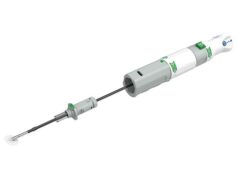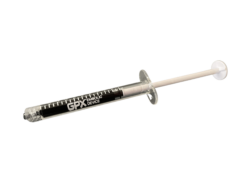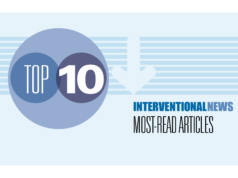
Collaboration in matters of training, research and clinical practice between radiation oncology (RO) and interventional oncology (IO) could significantly advance research into local therapies, benefit patients and also stand these two disciplines in good stead, urge leading experts from both fields.
Andreas (Andy) Adam, King’s College London, UK, delivered the keynote address at the Trans Tasman Radiation Oncology Group (TROG) annual meeting in Hobart, Tasmania, on 20 March. This event marked the first time an interventional radiologist addressed an organisation mainly focused on research in RO.
Adam has been involved in the transformation of professional societies and medical disciplines. He was one of the architects of the merger between the European Association of Radiology and the European Congress of Radiology, which created the European Society of Radiology. He also led a project that achieved subspecialty recognition for interventional radiology in the UK, when he was president of the Royal College of Radiologists. He has now moved outside his own specialty, by pursuing a project of convergence between IO and RO. He has championed this cause for several years, in partnership with Lizbeth (Liz) Kenny, who is an internationally renowned radiation oncologist and a past president of the Royal Australian and New Zealand College of Radiologists (RANZCR). Adam, who is also one of the editors-in- chief of Interventional News, and Kenny have co-authored several articles on this subject.
Last year, Adam suggested that interventional oncologists should be invited to the annual scientific meeting of TROG, which is a long-established, well-respected professional organisation focusing on research in RO. His proposal was initially received with scepticism. He was told that previous attempts to involve radiologists in TROG had not been succesful. He persisted, explaining that there is a great difference between inviting diagnostic radiologists who would be peripherally involved in RO studies, and inviting interventional oncologists, who would come as equal partners in minimally invasive, imaging-guided methods of treatment of localised cancers. He sought a meeting with the president of TROG, professor Farshad Foroudi, director, Austin Health Radiation Oncology, Melbourne, Australia, to explain the proposal in detail. This resulted in a meeting of minds; TROG supported the proposal, and a small group of interventional oncologists attended the annual scientific meeting in March 2018.
The IO programme for the TROG annual meeting was put together by Kenny and Nicholas (Nick) Brown, chair of the RANZCR Interventional Radiology Committee (IRC), co-chair of the TROG IO Special Interest Group and an active member of the Interventional Radiology Society of Australasia (IRSA). Adam was invited to deliver the keynote address, the title of which was ‘IO: a sister discipline to Radiation Oncology’. In his talk, Adam encouraged “a degree of convergence” between the two disciplines. He suggested that RO and IO are “natural partners”, both being forms of imaging-guided therapy that are also fundamentally different from surgery (the other local tumour treatment). Some procedures, such as brachytherapy for tumours inaccessible via natural orifices and radioembolization, already rely on skills from both disciplines. Commenting that RO and IO were only “superficially different from each other”, he explained that they could be brought even closer by the exploration of common potential research themes, such as the enhancement of outcomes by combining ablation with radiotherapy.
“Health expenditure should be re-balanced in favour of local tumour treatment and a partnership between RO and IO would revolutionise this field,” argued Adam.
A version of this idea is simultaneously playing out in the medical device industry. Adam used Varian’s (intended) acquisition of Sirtex for US$1.3 billion to illustrate the point (there have since been developments in this regard and this acquisition is no longer on the cards.) Delving into the rationale behind the intended acquisition, he noted that Sirtex provides Varian with an opportunity to expand its addressable market into IO and extend its leadership in the field of radiation medicine. He showed data to suggest that Varian expects the IO market to expand by around US$1 billion by 2022. Varian expects to accelerate its revenue by expanding its oncology customer base through its acquisition of Sirtex, Adam hypothesised.
Kenny told Interventional News: “The TROG meeting in Hobart, Australia, was a landmark in the calendar of IO. TROG is the first organisation to formally invite IO into the RO research arena and we are grateful to the TROG president Farshad Foroudi and the TROG office for their support and encouragement. TROG is a highly successful cooperative clinical cancer research group with an impressive track record in sophisticated trials and studies and has a major focus on procedural quality assurance. To have IO as part of the research infrastructure is just wonderful. The enthusiasm amongst both radiation oncologists and the interventional oncologists was palpable and two studies were approved for development, one in renal cancer and the other in lung cancer. I expect this to be the beginning of a very fruitful relationship, benefiting patients as well as our two disciplines greatly. There will be hard work to do over the next twelve months, but we are already looking forward to next year’s meeting in Melbourne.”
Brown elaborated on the strategy behind featuring IO at the TROG meeting. “IO and RO have a lot in common and both have so much to offer in the focal therapy space. It makes sense for two related specialties to collaborate to achieve our shared objectives and help each other overcome similar challenges. In addition, IO has much to learn from RO’s research successes and focus on quality assurance. There is clear potential for the two specialties to work together to achieve better outcomes from targeted treatments for patients, which will come from a combined approach rather than a competitive one,” he said.
Brown points to the fact that IO is rapidly expanding, but, “with the evolution of technology comes the responsibility of properly validating new techniques and understanding their roles in evidence-based treatment algorithms”, he emphasised. He explained that TROG has been designing, conducting and disseminating high-quality research for 30 years, “which has strengthened the role that radiation plays in modern cancer care. IO is playing catch-up in a field where the evolution of technology tends to outpace full clinical validation and stands to benefit enormously from partnering with RO colleagues.”
IO treatments have made considerable headway to establish equipoise in terms of outcomes with surgery in the treatment of various cancers such as small renal neoplasms and in liver cancer. Treatments such as ablation score over surgery with regard to many factors including the use of local, rather than general, anaesthesia; patients not needing overnight stay in hospital; greater sparing of noncancerous tissue; reduced morbidity and the treatment being less costly.
Adam also briefly dwelt on possibly one of the most important revolutions in cancer treatment: immunotherapy, noting that the link between ablation and immunotherapy was of significant current research interest. “Cancer cells that have been ablated act like antigens. Ablation brings tumour antigen in close contact with immune cells/ cytokines and growth factors to generate immunogenic cell death and prime the immune system. When appropriately timed, ablation can enhance tumour response to immunotherapy leading to many interesting areas of future research when coupled with RO, which also has immunogenic potential,” he said. (See more immunotherapy articles on pages 22 and 23).
In this scenario, a partnership between IO and radiation therapy will create a form of cancer surgery in solid organs. However, there is a “need to find a common language” in order to advance research in imaging-guided therapy. Adam emphasised the need for uniformity in assessing response to treatment. “CIRSE plans to develop global criteria and TROG can be a partner in this effort,” he maintained.
Elaborating, Adam commented that the formation of a research partnership between RO and IO would be beneficial. A closer relationship between professional organisations (such as RANZCR and the Royal College of Radiologists [RCR]) is also desirable. “Such a partnership could lead to teaching modules for interventional oncologists on basics of chemotherapy and radiotherapy and teaching modules for radiation oncologists on the effects of cryotherapy and thermal ablation. There could also be joint clinics, joint appointments and the establishment of clinical practice by interventional oncologists,” conveyed Adam.
Brown, explaining the IO content of the TROG programme in 2018 and the plan for 2019, said: “IO successfully pitched two separate research proposals at the TROG meeting involving percutaneous ablation of small renal masses and lung cancers. The projects will collect important data on how these techniques should best be utilised in modern clinical practice and may help to evolve treatment algorithms for renal and lung tumours to ultimately achieve better outcomes for patients. There is also a growing recognition of the importance of patient-centred outcomes in reporting trial data and that traditional endpoints such as overall survival are not the only consideration. In 2019, we will aim to consolidate our efforts from 2018 and make the two initial studies as successful as possible. We will also look to further develop a robust research strategy for IO in Australia and New Zealand and expand the research portfolio to include studies into treating liver and bone tumours”.
Adam made it clear that partnership between RO and IO would be a senior/junior partnership with RO being the more mature discipline, from which IO has much to learn. Particularly, Adam noted, interventional oncologists needed to practise as full clinicians and not as technicians as well as set up more effective planning systems and processes for quality assurance. There was also a need for IO to gather more and better evidence and organisations such as TROG could help with this, Adam said.
Improving the evidence base for interventional radiology is beneficial in other respects. “One of the main aims of the RANZCR IRC is to achieve specialty recognition for interventional radiology in Australia and New Zealand,” said Brown, noting that an important part of this process is the need for a robust evidence base. “As members of the same college there is also great scope for IO to share in some of the RO teaching modules and develop greater depth of training in oncology and tumour biology. As the RANZCR IRC looks to develop an interventional radiology specific training programme and curriculum, making the most of these opportunities will become very important.”
Adam described the opportunities from a partnership between IO and RO. “We would be able to provide curative treatments for most small tumours in solid organs, a wide spectrum of palliative procedures and we could advance research into combined IO and RO procedures.”
Looking ahead to oncology treatment in 2028, Adam said he foresaw a future in which most local tumour treatment in solid organs was delivered by interventional oncologists and radiation oncologists working in partnership, having undergone common core training. On a lighter note, he added, “TROG will also celebrate the 10th anniversary of being the first organisation in the world to embrace research in both disciplines”.











Fantastic Liz Kenny I read many posts of Radiation Oncologists but no one discusses RANZCR Interventional Radiology Committee (IRC) well done . I can share this point with my all friends.